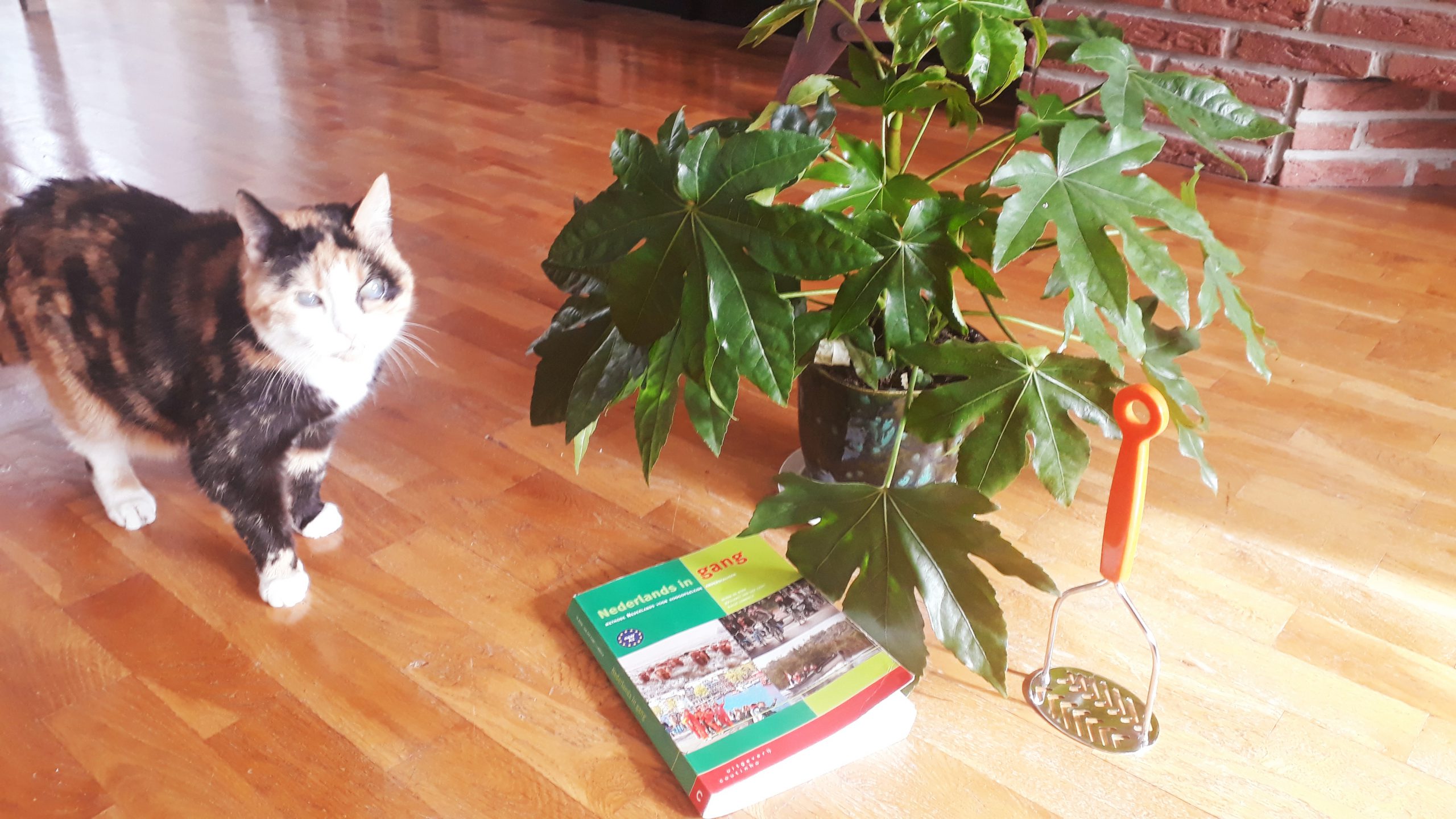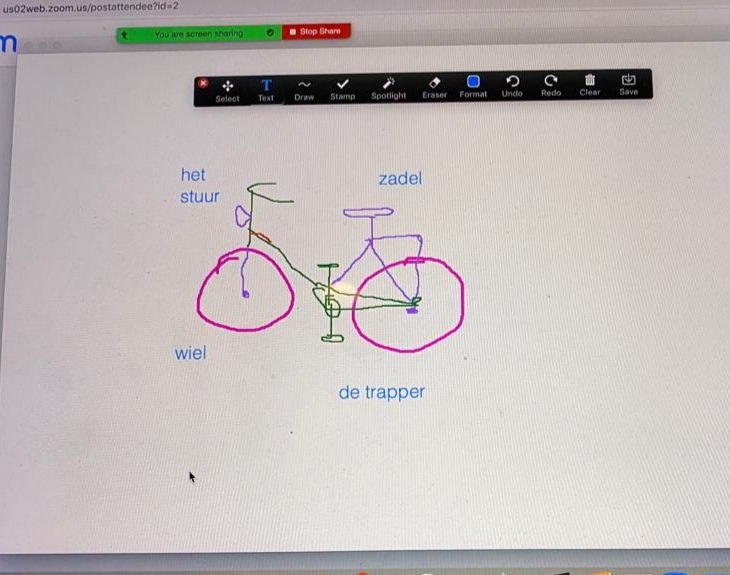It’s been a year since the arrival of Corona suddenly made us switch to online classes. Since then, some of my colleagues have had short intervals of teaching offline again between lockdowns, but for me today, 16 March 2021, marks a full year of teaching – and being taught!* – online.
Of course I miss being in the same room as my students, welcoming them to our school and making coffee for them. I also miss being welcomed into offices around Amsterdam to teach my lessons to groups of co-workers in their company building. But, there are also advantages of online teaching and following online courses – and that’s what I’d like to focus on in this blog. I’m not talking about not having to wear shoes, or not having to cycle through the rain to get to class – I’m talking about the extra possibilities online classes bring and the things that make my online classroom feel – at times – even more personal than the offline classroom.
Location, location, location
To start with: you can now join our classes from everywhere in the world! I have students joining from Ukraine, England, France, Italy and, of course, the Netherlands, but not all from Amsterdam or its surrounding cities. This creates a whole new topic of conversation: how are things over there? How are the ‘covid rules’? But also: how is the weather? What do you see when you look out of the window? And it’s immediately noticeable when someone moves: where are you now? In your office? Visiting a relative? This makes us much more aware of our different lives when we step ‘outside’ of the classroom, and more connected. I have had a couple in one of my groups for two courses now, who often join the class separately (him from the Netherlands, her from Ukraine), but sometimes suddenly appear together, when he visits her in Ukraine. Last week she appeared on our screens from her partner’s house in the Netherlands for the first time. We were all very excited and eager to hear more about her experience coming to the country: what is it like to finally hear the language you’ve been learning all around you?!
Seeing people in their own environment creates an intimacy you don’t get when you only see each other in a classroom. We’ve just met and we’re already visiting each other! Sometimes we also get to see partners, children or pets and we notice changes in the room – like the beautiful fresh bunch of flowers one of my students always has by her laptop. Will it be tulips or roses this week?
Using the space
It’s fun to use people’s houses as conversation topics in your lesson. People feel strongly about the things they surround themselves with and are often happy to talk about them. In my lessons we’ve given each other tours through our houses and I’ve asked people to show objects that are important to them and to tell us about them. I’ve had one group that turned out to be obsessed with plants – they asked each other lots of questions about every plant they saw and showed new plants at the beginning of each lesson. I’ve also used objects from my own house to illustrate what I’m talking about. When we were talking about typical Dutch dishes and ‘stamppot’, I had my ‘aardappelstamper’ ready by the laptop! I would not have brought that to the school.
My colleague Alberto, who teaches Spanish, has had similar experiences. He also likes to play with the environment, for instance by having a student hide an object in their room (‘the bomb’) that the other students must make them find again by giving directions. Sharon (Dutch) adds that it’s not only fun to use the environment and to ask lots of questions about what you see, but that students are often very curious about their teacher’s house as well, which leads to spontaneous dialogue and them creating a different bond with the teacher than they have if they only see them in the classroom.
Digital tools
Using break-out rooms and screensharing also opens up a host of new lesson ideas. By using screen share in break-out rooms you can have your students work on a text together (for example: a dialogue that their fellow students will later have to perform) or they can show a picture to illustrate a story they are telling. My colleague Elianne (Dutch) told me she loves to go on a virtual holiday together by means of Google Streetview, with one of her students as the local guide. There are also a lot of apps that work great on screenshare, such as Padlet (for puzzles: match the word to the picture, or the answer to the question), Kahoot (quizzes) and Wheeldecide (a word wheel that you can use to randomize words students need to use in sentences). Sharon told me she recently discovered skribbl.io, which I’m now eager to try.
Teaching online, and also being a student of my Italian colleagues’ online classes, has opened my eyes to a host of new possibilities and lesson ideas – ideas Taalhuis colleagues of all languages immediately started to share last March when this was all Very New and are still sharing with each other.
Moving forward
I’m obviously very much looking forward to a time where we’ll be able to see each other in person again, when my hands will be covered in marker pen and students can move freely around to chat to each other instead of being put into break-out rooms by me, the virtual puppet master. But, I also think online lessons are here to stay. I wouldn’t want to miss my students in other parts of the world anymore and I love how you can feel part of a group and visit so many places together from wherever you are at the moment. You are all very welcome to join me in my house from the comfort of yours!
Janneke


